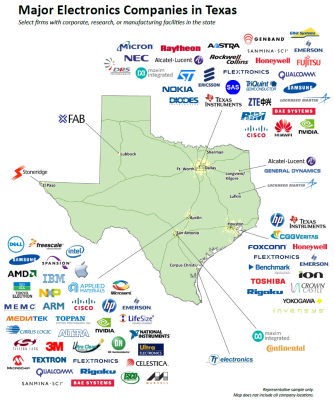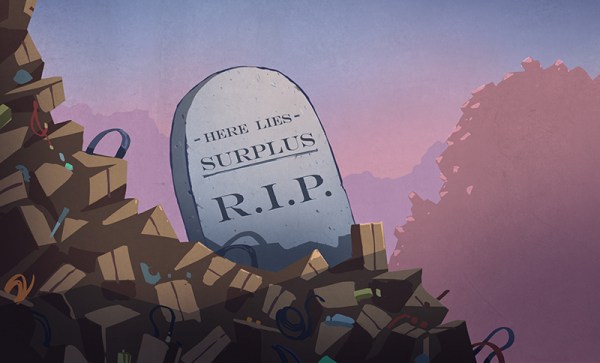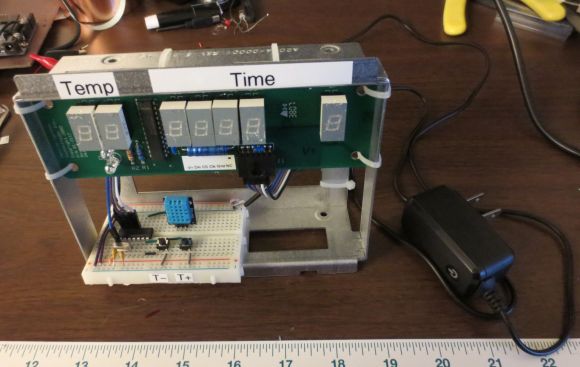I thought the surplus electronics market in Dallas was a byproduct of local manufacturing, after all we have some heavy hitters in our back yard: Texas Instruments, Maxim (Dallas Semiconductor), ST Micro (at one time), Diodes Incorporated. If we widen our radius to include Austin (3 hours down the road) we can make a much more impressive list by including: National Instruments, Freescale Semiconductor, better yet I’ll just insert the graphic I’m pulling data from right here:

Granted, not all of these are companies that manufacture silicon, or even have manufacturing facilities here in Texas. That doesn’t necessarily matter for surplus to exist. Back to my point of where surplus originated. While I wasn’t completely wrong (these companies certainly have helped contribute to the surplus electronics market) the beginnings of surplus storefronts date back to World War II. Did anyone see that coming? Neither did I. However it does make sense, the US government would have had a large stock of “stuff” to get rid of at the end of the war.
Enter the sale of government surplus all over the nation, usually near air force bases. So this is how the more generalized concept of a surplus shop came to be in existence; mix in the domestic manufacturing of electronics in the 1970’s and we have electronics surplus shops aplenty.
My First Hand Experience
I didn’t really appreciate how valuable my local electronics shop was until watching Beers in Bunnie’s Workshop – Workshop Video #36. If you haven’t seen the video you only need to know that [Ian] of Dangerous Prototypes and [bunnie] of Andrew [bunnie] Huang are standing in [bunnie]s work-space in Singapore drinking beer and talking about the lab that is [bunnie]s life. You with me now? Okay, there is a point in the video where the two discuss the ability to run down the street and buy a connector as something only available in Singapore or Shenzhen. Let me briefly pause here to clarify that I’m not comparing my local electronics shop to the Shenzhen market or Sim Lim Tower in Singapore, only stating that I too can hold parts in-hand before purchasing them. I’m also not [brandon] of Dangerous Prototypes or Andrew [brandon] Huang, clearly.
I do however have an electronics selection at my disposal that is unmatched until you get to the west coast shops. I went on a bit of an adventure with the owner [Jim Tanner] of my local shop [Tanner Electronics] to take some pictures of the retail floor and a few behind the scenes (warehouse) shots that you can check out after the break.












